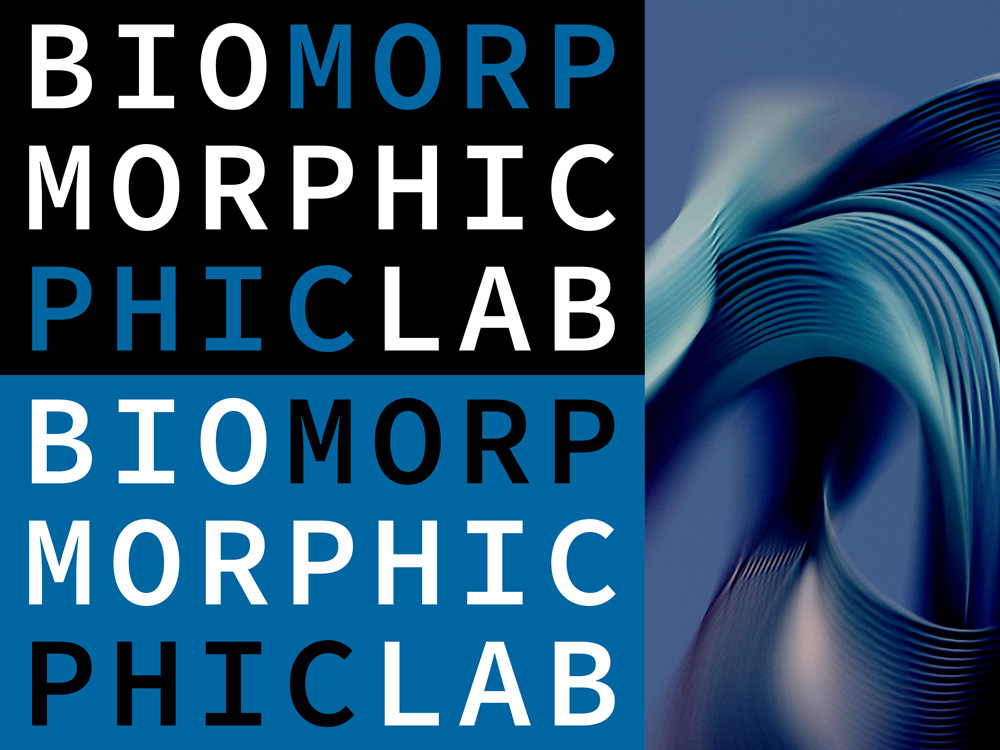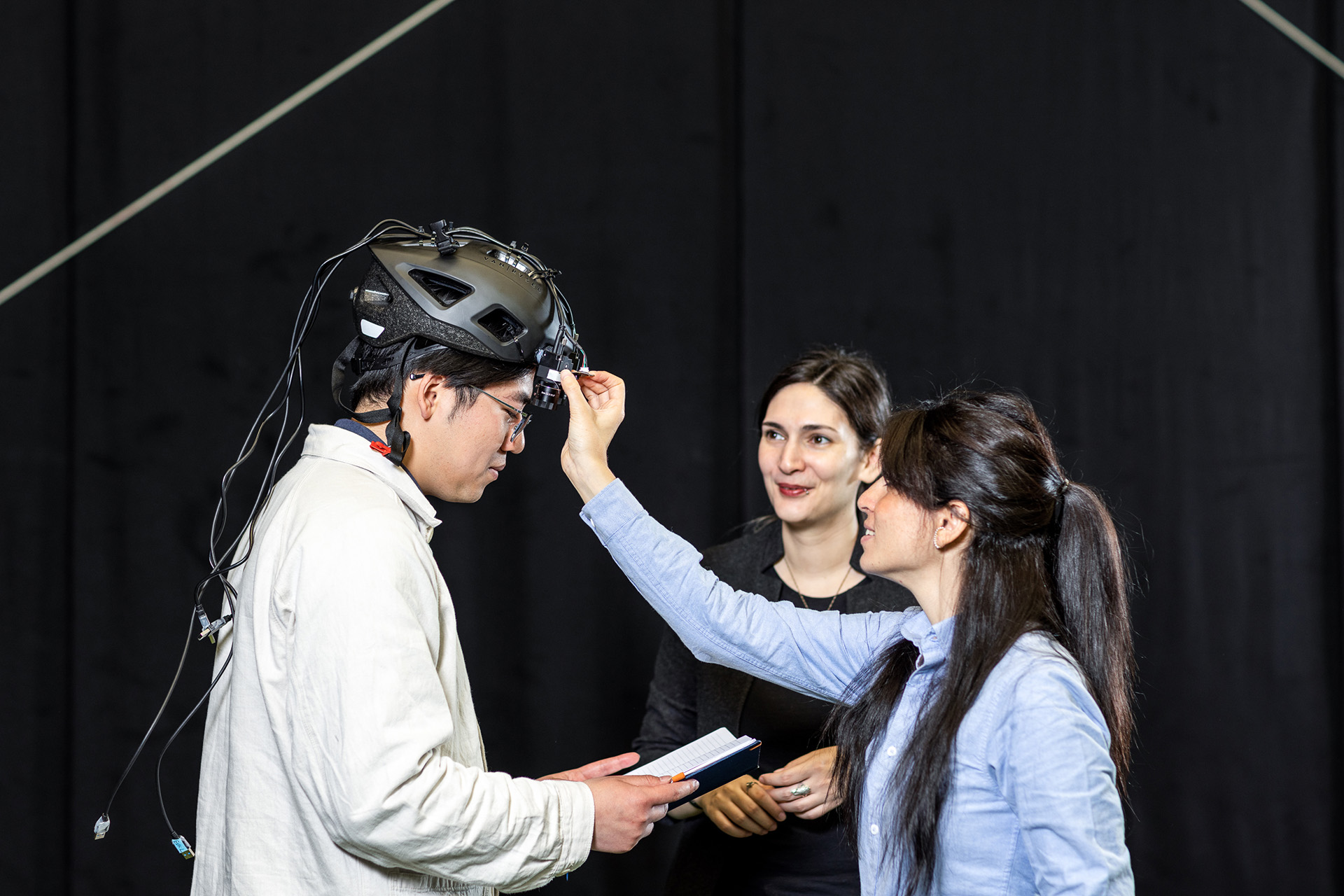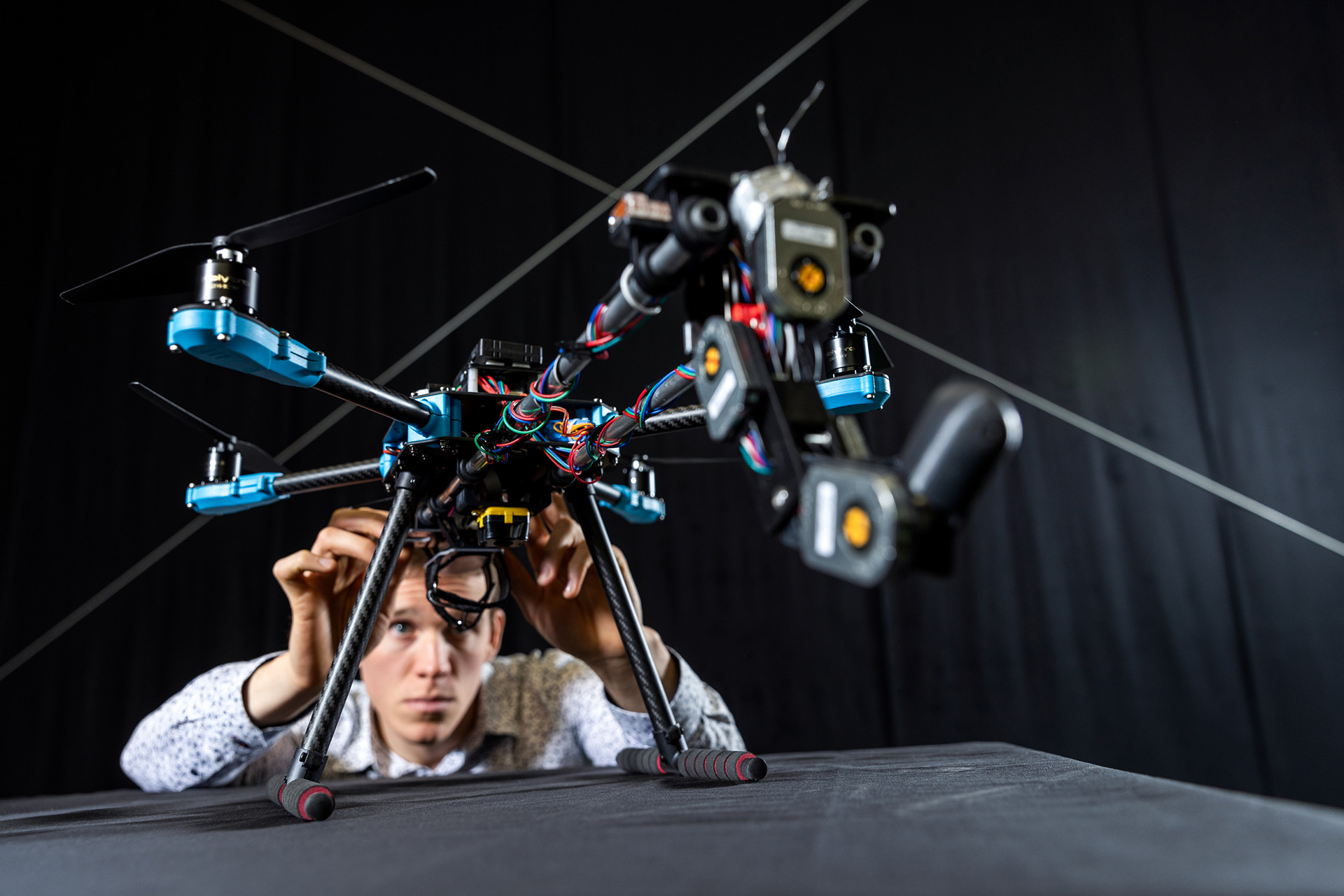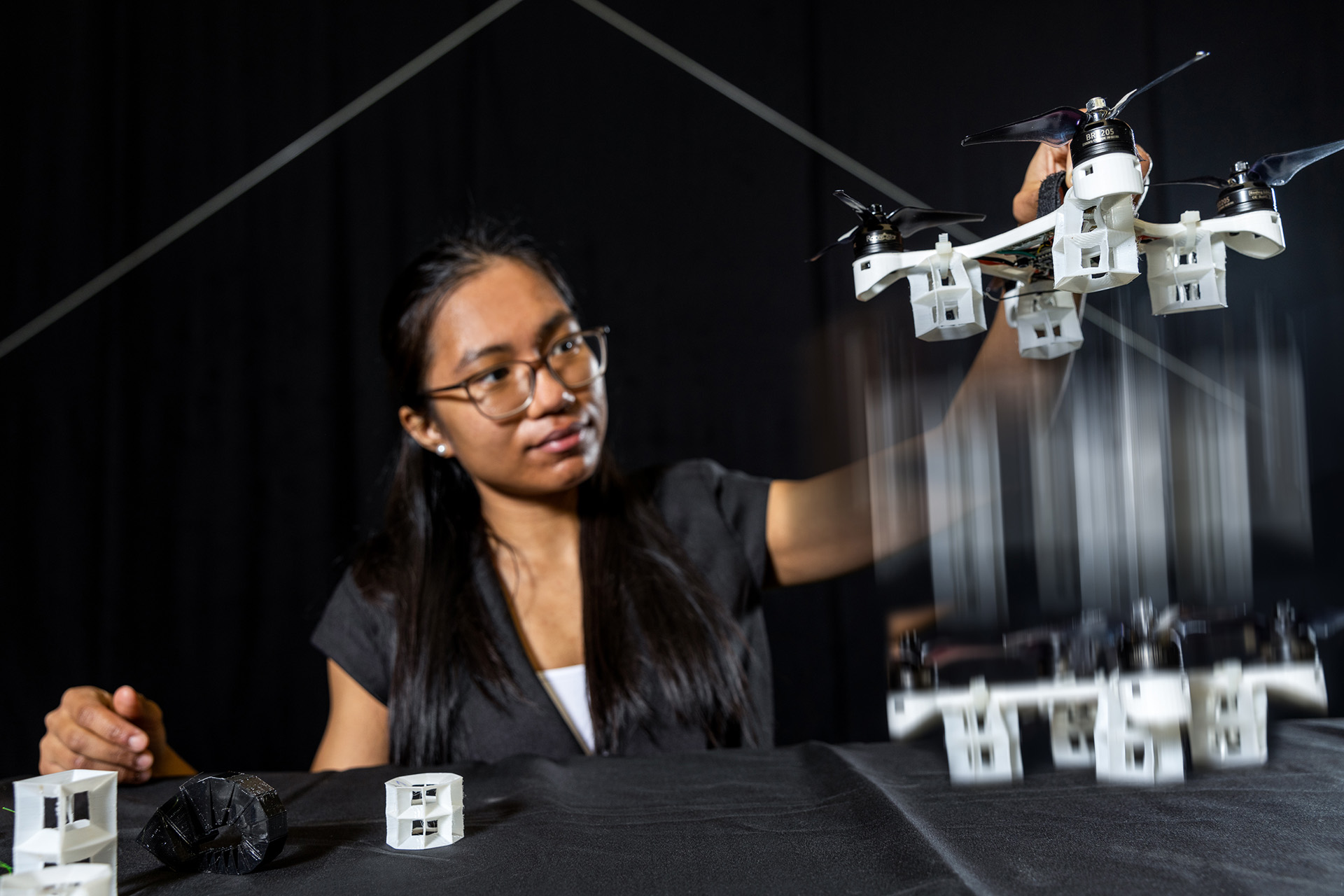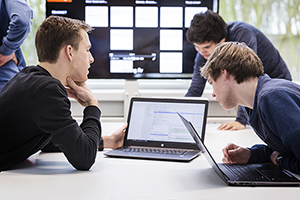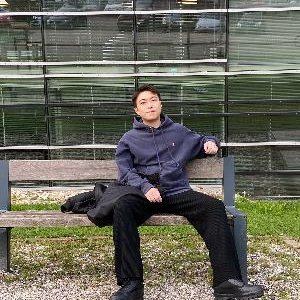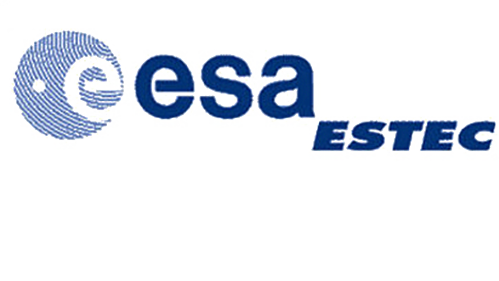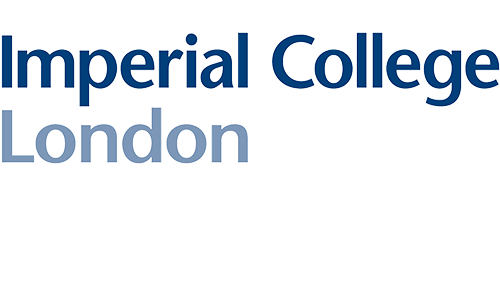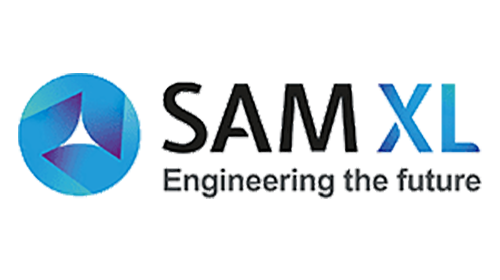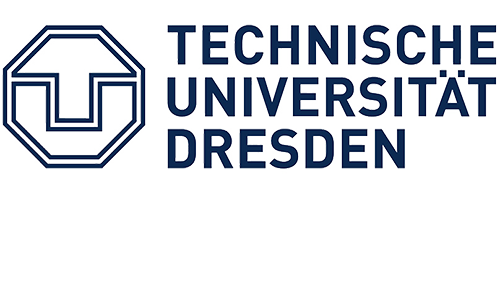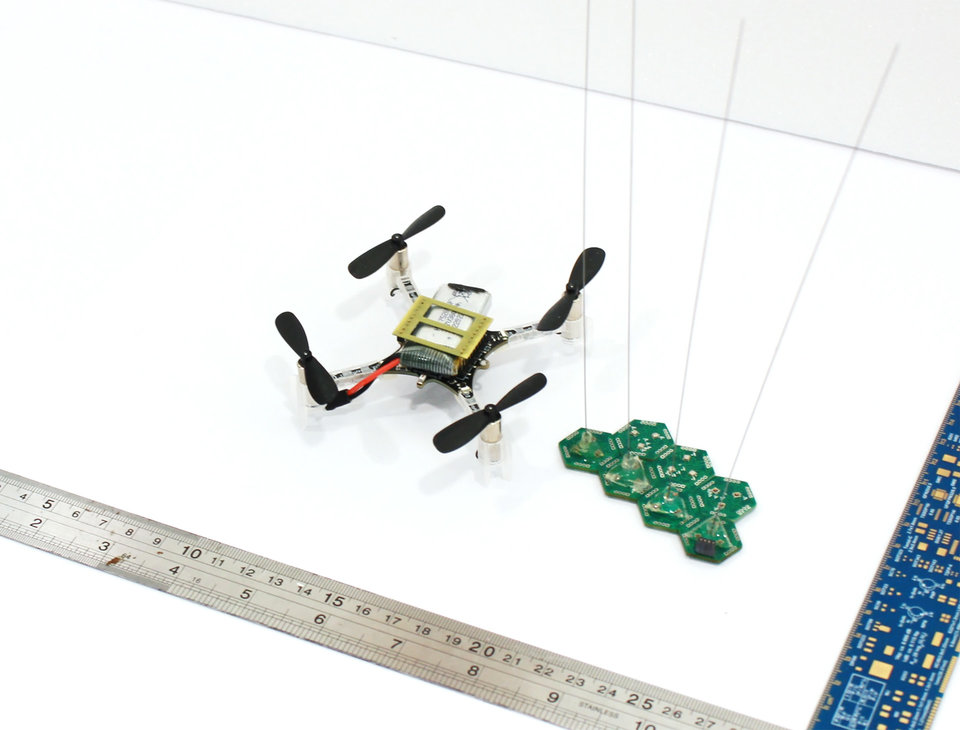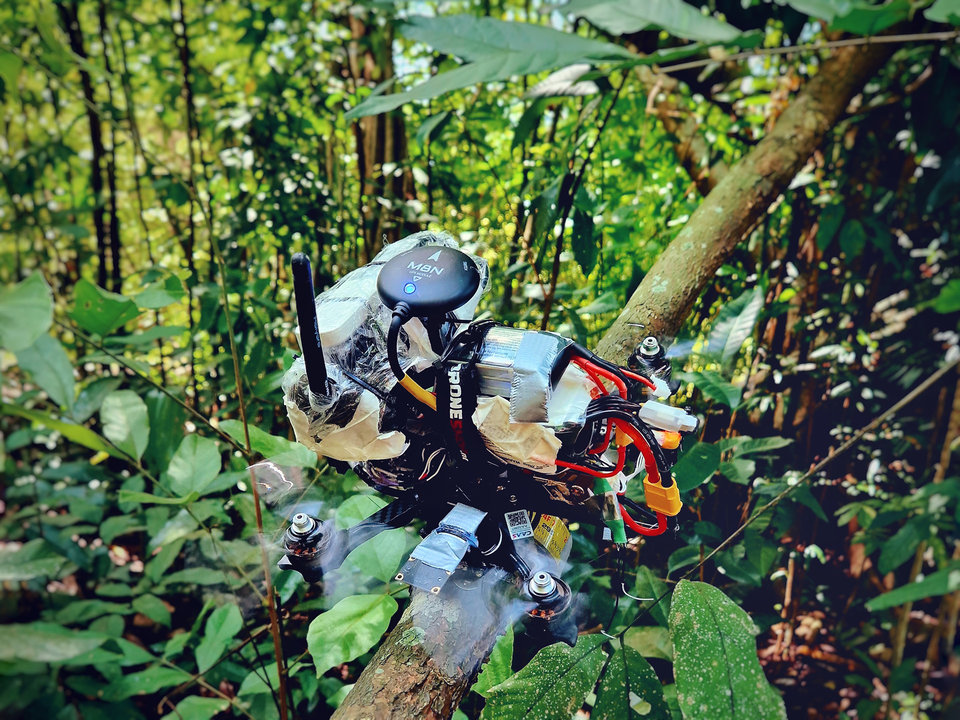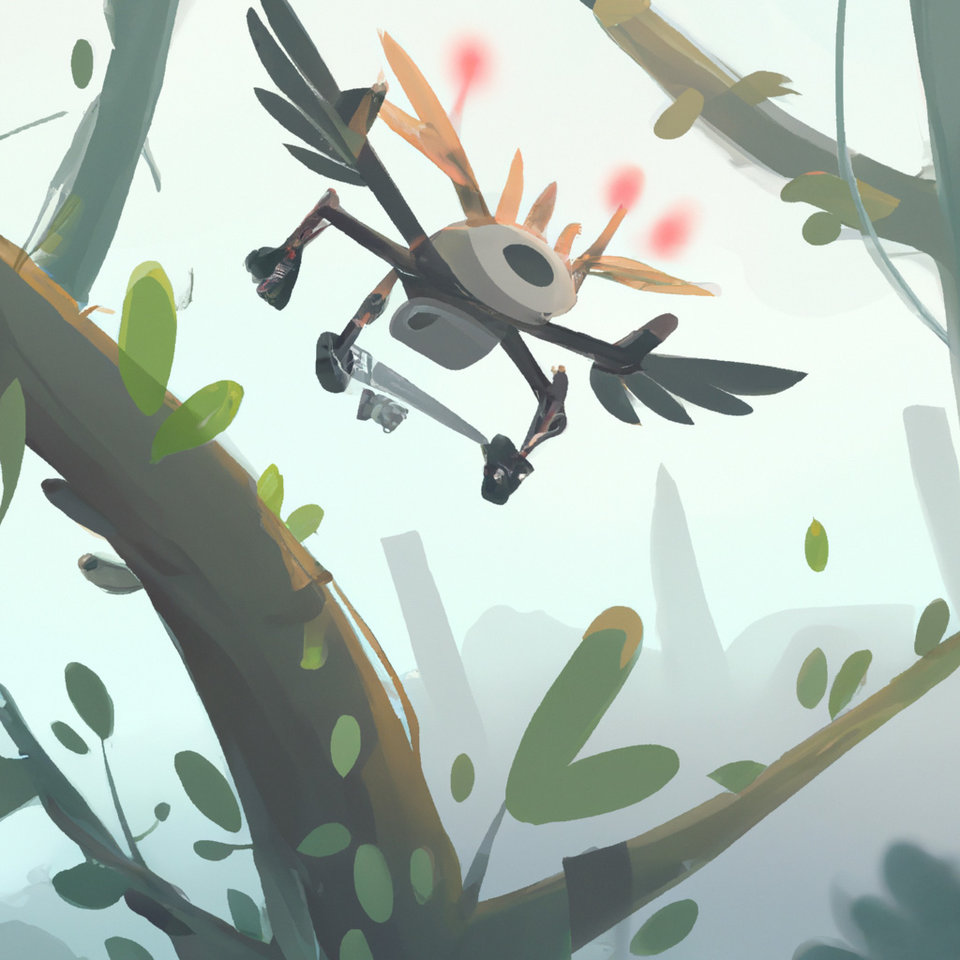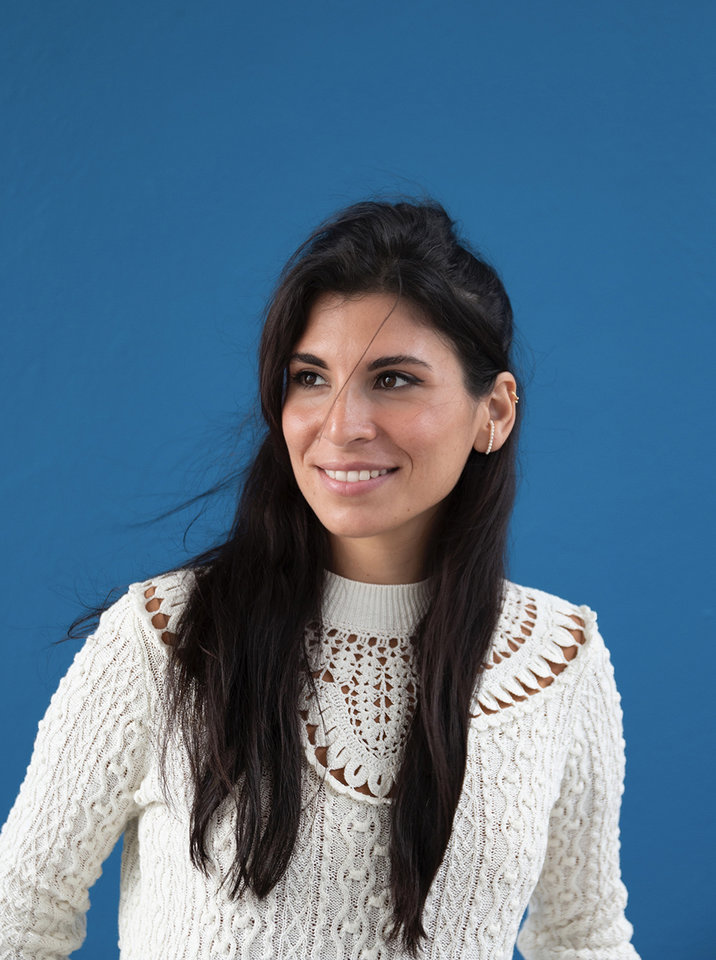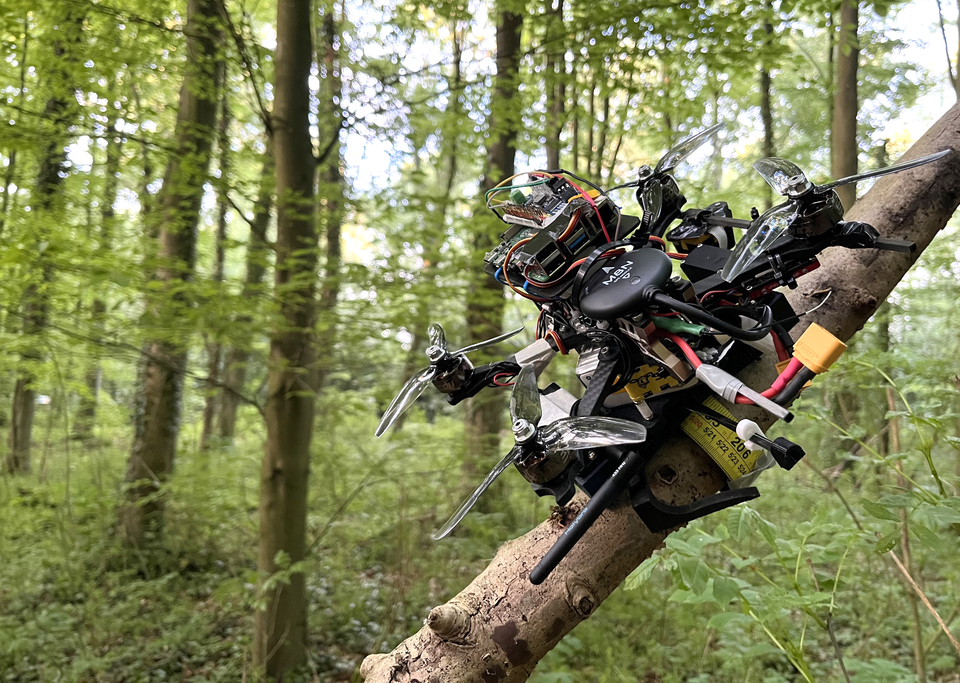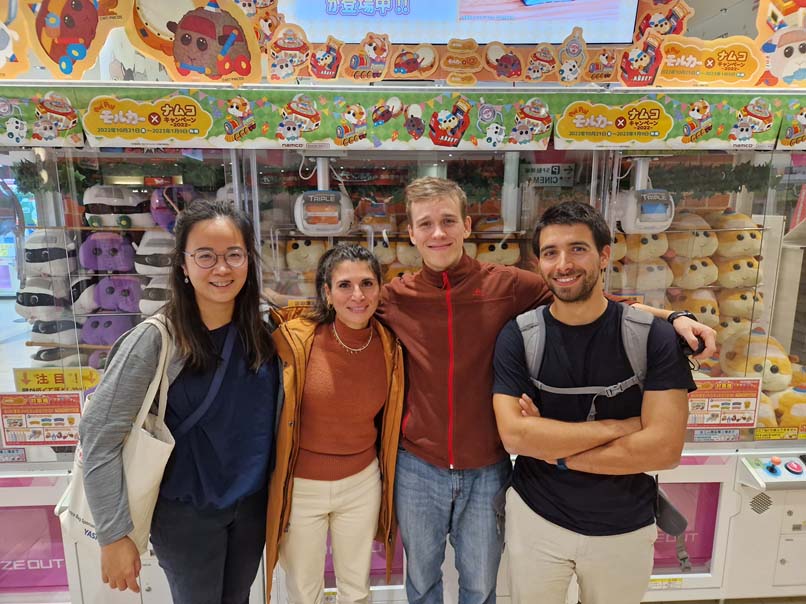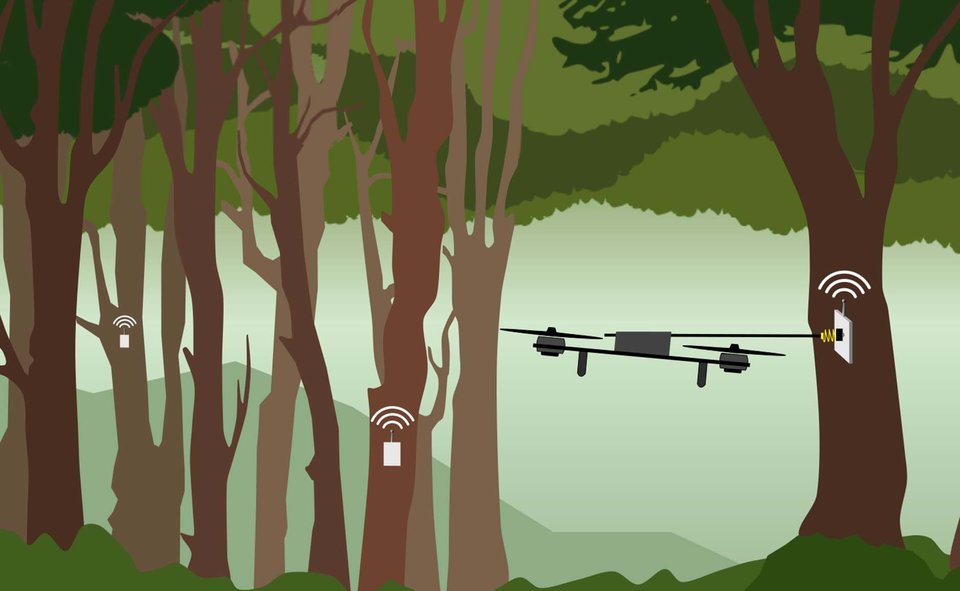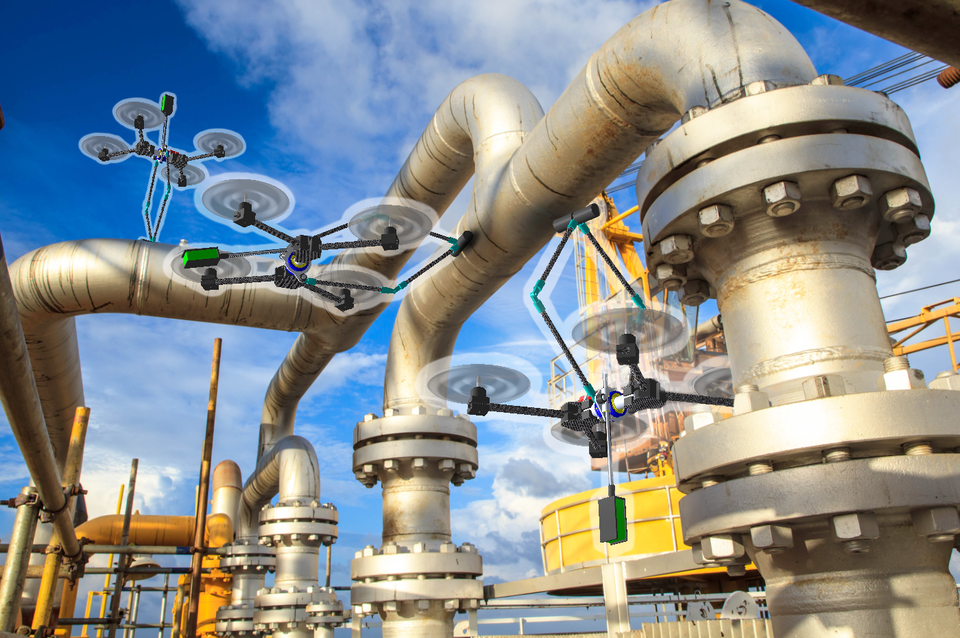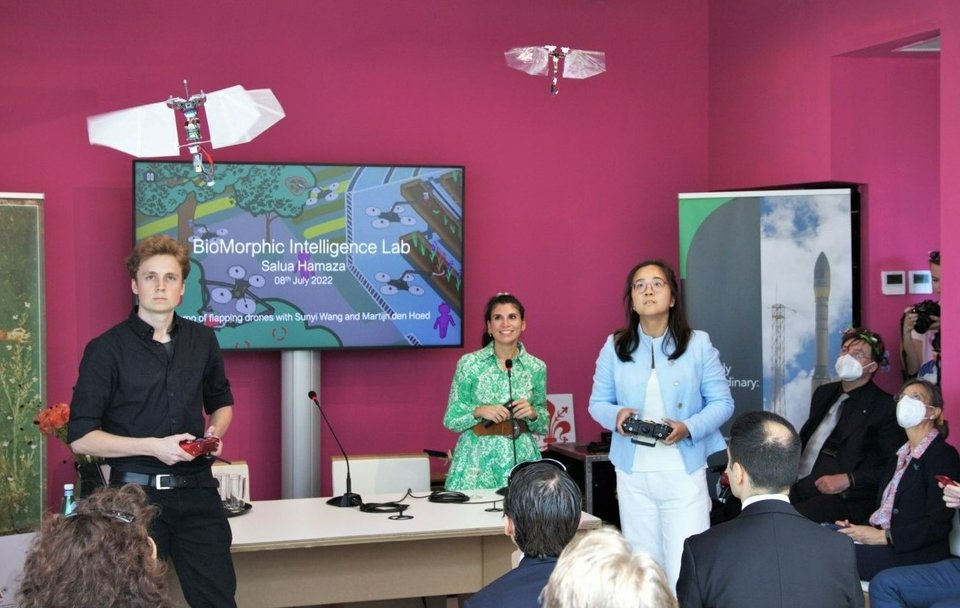BioMorphic Intelligence Lab
Biologically inspired solutions for aerial robotics
Aerial robots are now ubiquitous. Thanks to their nimbleness, manoeuvrability, and affordability, drones are used in many sectors to monitor, map, and inspect. As a next step, flying robots offer more when interacting with their surroundings via anthropomorphic-like manipulation capabilities. Some overarching challenges remain for this new class of aerial robots, and solutions inspired by biology can be implemented across three key areas for robot performance: sensing their environment, processing this information, and acting upon the results.
SENSE
Bio-inspired perception (e.g., visual or tactile feedback) can provide the drone with information on its environment, mimicking animals’ sensory feedback. Using retina-like event cameras, drones can avoid obstacles and detect objects at a fraction of the power and latency of conventional hardware and algorithms. Enhancing tactile feedback can also prompt different behaviors in response to different force stimuli.
THINK
Bio-inspired, brain-like models from Neuromorphic AI can help lower the computational load and speed up sensory data processing for navigation. This boosts real-time control and autonomy. Compliance embedded in the control of the robot also favors safe and robust interaction with unknown environments and targets.
ACT
Bio-inspired design and materials make the drone's body fit for interaction with unknown objects and enable a safe response to external disturbances. Robot morphology can be inspired by flying animals’ shape, configuration, and materials. Together, these features create embodied intelligence and can partially offset the behavior complexity handled by the brain.
The BioMorphic Intelligence Lab aims to tackle robustness and efficiency challenges for interacting drones, using biologically inspired solutions for both the 'body' and the 'brain' and applying embodied intelligence and neuromorphic AI techniques.
The BioMorphic Intelligence Lab is part of the TU Delft AI Labs programme.
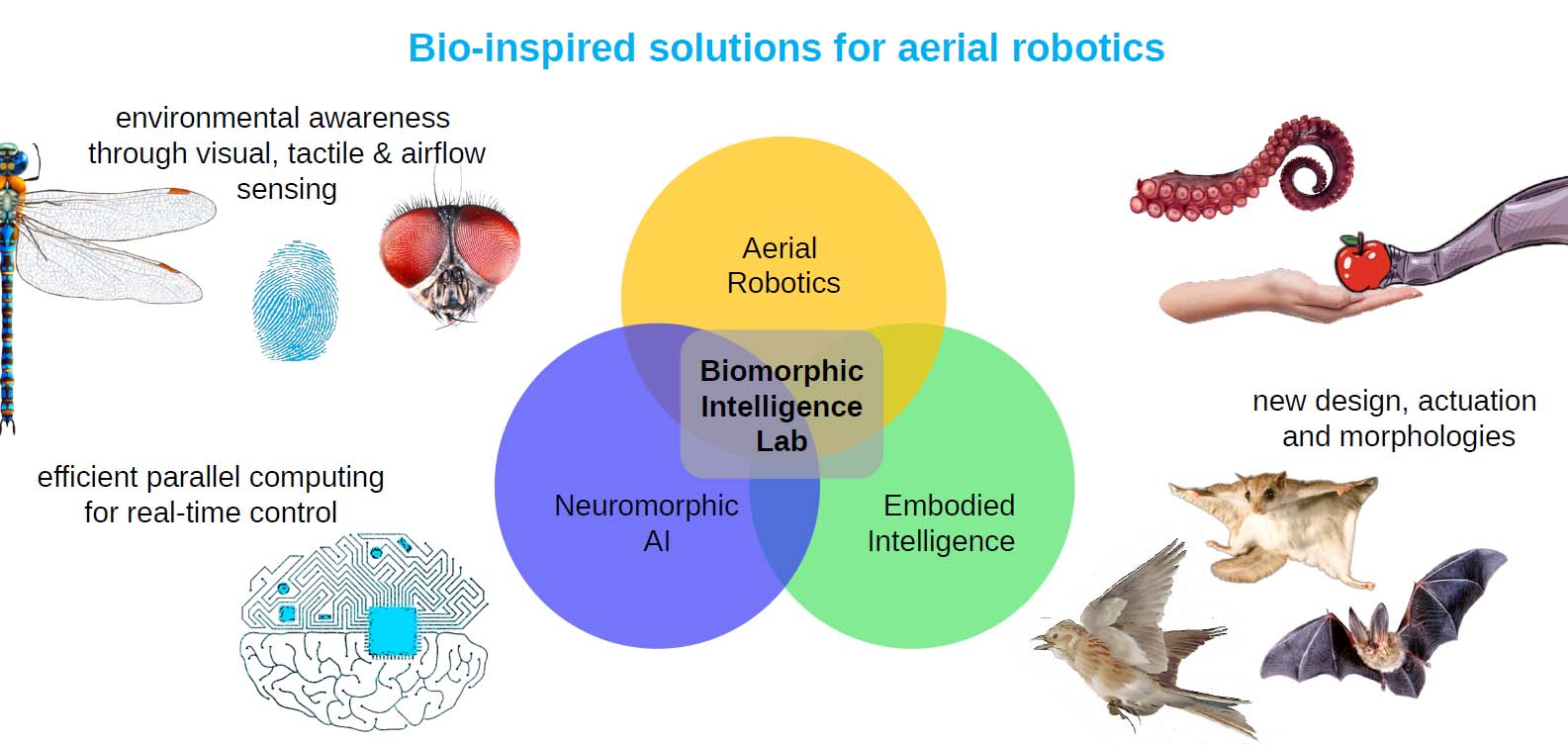
The Team
Directors
PhD students
Associated faculty
Education
Courses
- Every Semester: Design Synthesis Exercise (DSE) for Bachelor Students. The projects are always within the field of “Drones for Environmental Monitoring”.
- Project supervision in the Deep Learning (CS4240) course for MSc Computer Science.
- Project supervision in the Research Project (CSE3000) course for BSc Computer Science.
- Guest lecture on "Event-Based Vision" in the Computer Vision by Deep Learning (CS4245) course for MSc Computer Science
- Guest lecture on "Neuromorphic Computing" in the Machine Learning 2 (CS4230) course for MSc Computer Science.
- Supervision of MSc Graduation Projects for the Computer Science program (IN5000), see below for open project topics.
- Guest Lecture on ''Physical Intelligence for Interaction'' (AE4350) course for MSc in Aerospace Engineering
- MSc Course: Physical Interaction for Aerial and Space Robots (AE4324)
AI minor and AI Master Block programs
- Project supervision for the Capstone Applied AI Project (TI3150TU)
- Fundamentals of AI (IFEEMCS520100) and
- Interdisciplinary Advanced AI Project (IFEEMCS520200) courses.
Master projects
Ongoing
- Soft Arerial Manipulation
- Tactile Aerial Navigation
- Dynamic Perching
- Compliant Landing
Finished
- Vision-guided Quadrotor Perching on Imperfectly Cylindrical Structures
- Aerial Perching via Active Touch: Embodying Robust Tactile Grasping on Aerial Robots
- A Centralised Approach to Aerial Manipulation on Overhangs
- ADAPT: A 3 Degrees of Freedom Reconfigurable Force Balanced Parallel Manipulator for Aerial Applications
- Automated Aerial Screwing with a Fully Actuated Aerial Manipulator
- Sensorless Impedance Control for Curved Surface Inspections Using the Omni-Drone Aerial Manipulator
- Embodied airflow sensing for improved in-gust flight of flapping wing MAVs
- Battle the Wind: Improving Flight Stability of a Flapping Wing Micro Air Vehicle under Wind Disturbance
For a more detailed list of Thesis Topics, please see the following link (which is only accessible if you have a TU Delft account)

